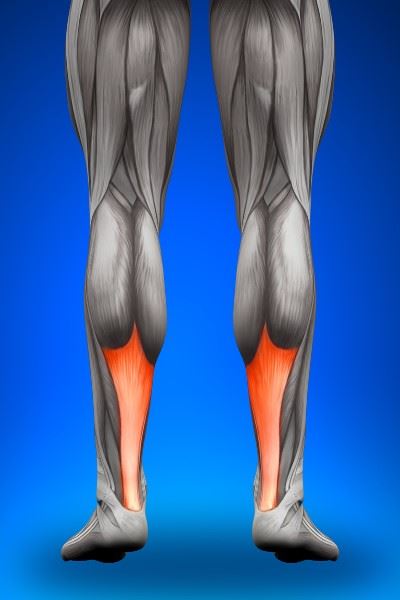-
Home
-
Choosing an Ankle Brace for Achilles Tendonitis
Choosing an Ankle Brace for Achilles Tendonitis
July 13, 2023

Achilles tendonitis is a condition in which the Achilles tendon, which connects the calf muscles to the heel bone, becomes inflamed and swollen due to excessive strain or overexertion. Achilles tendonitis often causes a gradual buildup of pain and stiffness along the back of the lower leg, which worsens over time and often limits mobility.
While there are different ways to help treat and manage this painful condition, using ankle braces is one type of treatment method we will discuss in this article. Additionally, we will look at how ankle braces help with Achilles tendonitis and which type of brace is best for healing and recovery.
Do Ankle Braces Help with Achilles Tendonitis?
Ankle braces are designed to support the ankle and provide stability, reducing the risk of injury or further damage. Studies have shown that ankle braces can be effective in managing Achilles tendonitis by reducing swelling and inflammation in the achilles tendon.
Typically, ankle braces work by applying pressure to the affected area, which can help alleviate pain and provide support to the tendon. By preventing excessive movement of the ankle joint, they can also help prevent further aggravation of the condition.
What Ankle Brace is Best for Achilles Tendonitis?
When it comes to selecting the best ankle brace for Achilles tendonitis, there are several options available, depending on your individual needs. Some of these options include Achilles tendonitis braces, ankle supports, and orthotic devices.
Achilles Tendonitis Braces
Achilles tendonitis braces provide compression and support to the affected area and are typically made of neoprene or breathable knit material. They feature a compression sleeve that helps to increase blood flow, reducing swelling and inflammation over time. These braces may also feature a gel pad or other cushioning material, which can help to reduce pressure on the tendon.
The AirCast® AirHeel™ is an ankle brace that combines arch support with air cell technology to help reduce pain and promote healing for Achilles tendonitis and plantar fasciitis. It has two interconnected air cells, located under the foot arch and in the back of the heel, that apply pulsating compression with every step, thereby helping to reduce swelling and enhance circulation.
Ankle Support Braces
Ankle support braces typically provide more generalized support to the ankle joint, is often made of elastic material or neoprene, and may feature adjustable straps or laces to provide a customizable fit.
The AchilloTrain® is a support and compression brace designed to help alleviate pain and promote healing for Achilles tendonitis, Achilles tendon strains, and other Achilles-related conditions. The brace features a viscoelastic insert that provides gentle compression and support, as well as a heel wedge that helps lift the heel and reduce tension on the Achilles tendon.
Orthotic devices
Orthotic devices—such as shoe inserts, lifts, or pads—elevate the heel and provide cushioning to help boost recovery and promote healing by lessening the amount of strain and pressure on the achilles tendon.
AliMed® Adjustable Heel Lifts are designed to help reduce discomfort and pain caused by leg length discrepancy, plantar fasciitis, Achilles tendonitis, and other foot and ankle conditions. These heel lifts are adjustable to three different heights and can be easily added or removed from shoes.
The AliMed® Silicone Heel Cups are soft, supportive cushions made of durable silicone material that help reduce shock and pressure on the heel. This can help alleviate pain caused by Achilles tendonitis, plantar fasciitis, bursitis, and other conditions.
The Silopad™ Achilles Heel Pads absorb friction, equalize pressure, and apply gentle compression. They can be used for conditions such as Achilles tendonitis, bursitis, Hagland deformity, and others.
The AliMed® Achilles Boot Wedges fit into most closed-heel walker boots, turning any walker boot into an Achilles Tendon Walker Boot. The hindfoot wedge has peel-away layers which allow for progressive adjustment of plantarflexion.
Is There a Foot Brace for Achilles Tendonitis?
While ankle braces are the most common type of brace used for Achilles tendonitis, there are foot braces available as well. These braces are designed to provide support and stability to the entire foot, rather than just the ankle joint. A foot brace may be recommended for individuals who have a more severe case or other foot or ankle issues that require additional support.
Should I Wear an Ankle Brace for Tendonitis?
If you have been diagnosed with Achilles tendonitis, your doctor may recommend wearing an ankle brace as part of your treatment plan. When selecting an ankle brace for Achilles tendonitis, it is important to choose a brace that provides adequate support and compression to the affected area.
An ill-fitting or poorly designed brace may do more harm than good, so it is important to speak with a doctor or a qualified medical professional to ensure that the right brace is selected based on your individual needs.
It is worth noting that while ankle braces can be helpful in managing Achilles tendonitis, they are not a cure-all solution. Individuals with this condition should still take steps to prevent further damage to the tendon, such as regular stretching, wearing the right types of footwear, avoiding strenuous physical activities that may aggravate the condition, and getting adequate rest.
While achilles tendonitis can be debilitating if the tendon is continually aggravated from overexertion and left untreated, the good news is that it is highly treatable and preventable if the right measures and precautions are followed. This includes wearing an ankle brace or other type of achilles support, which can lessen the severity of pain and inflammation on the achilles tendon.